- | 10:30 am
With glass buried under ice, Microsoft plans to preserve music for 10,000 years
A new vault for music could protect one of our greatest art forms for future generations.

Nothing is forever. By Microsoft’s estimation, hard drives protect data for five years before they can go bad. Tape lasts about a decade, while CDs and DVDs can make it as long as 15 years before their contents are at risk of becoming illegible.
While we seem to live in an age of progress—the iPhone can store thousands of songs in your pocket and stream countless more from the cloud—even in the best of cases, those songs will deteriorate millennia earlier than hieroglyphics carved into stone by the ancient Egyptians.
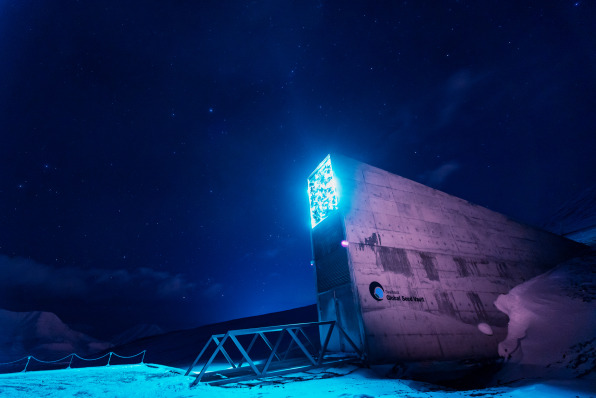
This is the core challenge behind the Global Music Vault. Located in Norway, it’s part of a cold-storage facility drilled into the very same mountain as the Svalbard Global Seed Vault. While the seed vault protects the earth’s cache of seeds, the Global Music Vault aims to preserve the sonic arts for generations to come.“Here, master music files and irreplaceable music data are to be preserved in music capsules, protected in the vault, and remembered for eternity,” the company explains. Technically, a venture company called Elire Group is overseeing the vault, while a partnership with Microsoft is testing a new, glass-based storage medium to make this vision possible.
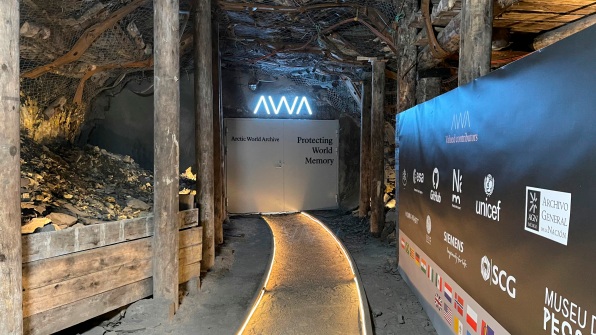
While seeds are biological organisms, evolved over billions of years to protect their DNA, our man-made storage solutions are far more finicky. A single swipe of a magnet can wipe a hard drive, while the plastic coating on a CD can simply rot. Nowhere was the fragility of our recordings more clear than in 2008, when a fire swept across a backlot of Universal Studios Hollywood, destroying as many as 175,000 master recordings.
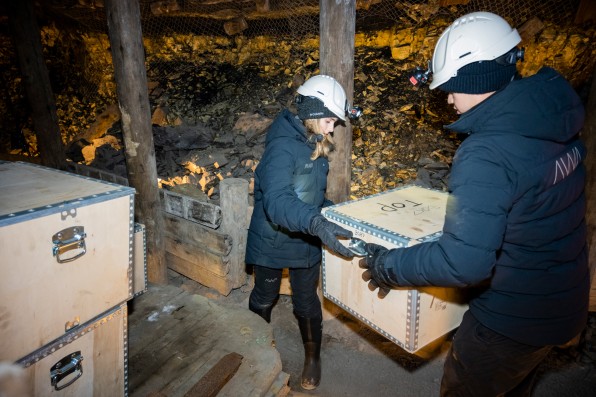
As Microsoft has shifted an increasing amount of its business to the cloud, the company has been investigating more reliable, and information-dense, ways to store data than on hard drives. (After all, the cloud is just a bunch of servers, and servers are filled with hard drives that routinely go bad.)
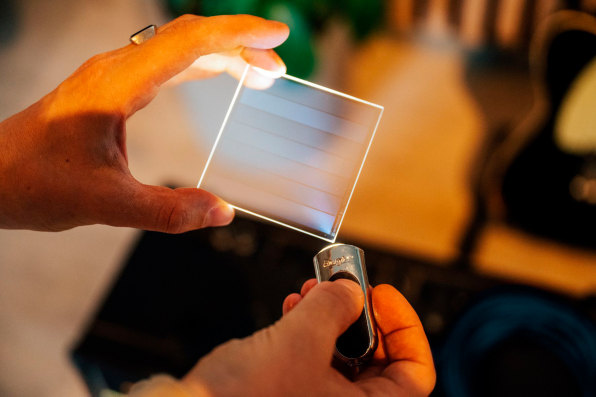
One such solution the company has developed is going into testing with the Global Music Vault now. Dubbed Project Silica, you could oversimplify the technology as something akin to a glass hard drive that’s read like a CD. It’s a 3-by-3-inch platter that can hold 100GB of digital data, or roughly 20,000 songs, pretty much forever.
Microsoft begins with quartz glass, a high-quality glass that features a symmetrical molecular structure, which makes it far more resilient to high temperature and pressure than the glass in your home’s windows (and, like all glass, it’s immune to the electromagnetic scrambling of nuclear weapons). Then, using a femtosecond laser—a laser that can fire for one quadrillionth of a second—Microsoft etches information as 3D patterns into the glass. Once this data is stored, another laser reads the quartz, as machine learning algorithms translate the pattern back into music, movies, or any other digital information.
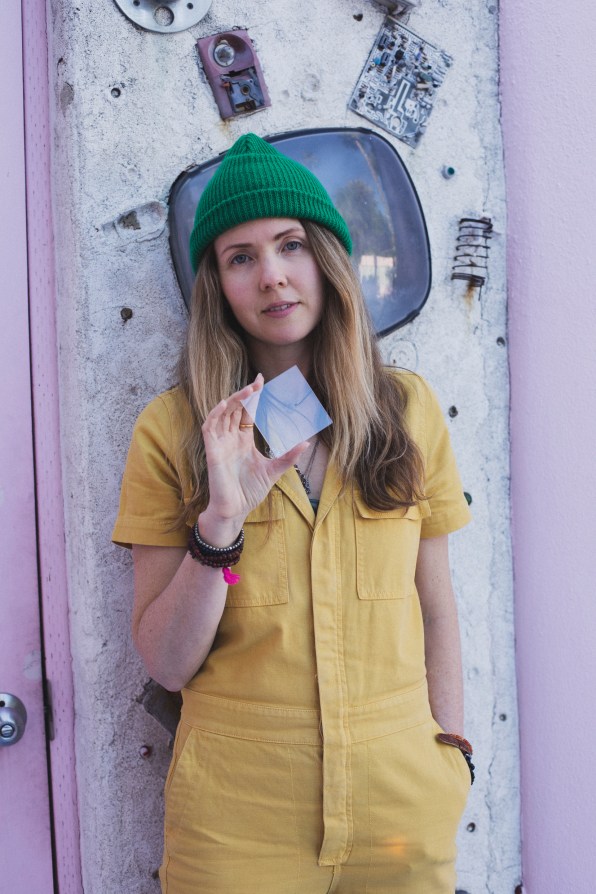
Beatie Wolfe [Photo: Ross Harris/Global Music Vault]
“The goal is to be able to store archival and preservation data at cloud scale in glass,” says Ant Rowstron, distinguished engineer and deputy lab director at Microsoft Research in Cambridge. That’s a business goal for Microsoft, but also a practical goal for protecting the future of music and other data.I imagine this vision as something like an internet that’s immune to digital rot. The hope is that eventually Project Silica can store “tens of petabytes” of music a year (a petabyte is 1000 terabytes, and a terabyte is 1000 gigabytes), while Microsoft estimates that its platters can last as long as 10,000 years.
For the time being, the Global Music Vault hasn’t committed to using Microsoft’s technology exclusively. It’s running a proof of concept—which seems to be more a promotional and fundraising measure than a functional test—by placing platters into its storage with recordings from the Polar Music Prize, the National Library of New Zealand, and the International Library of African Music. Alongside them, the mixed-media musician Beatie Wolfe will be including a small selection of tracks, including the piece From Green to Red, which she wrote as a teenager in response to the climate crisis.
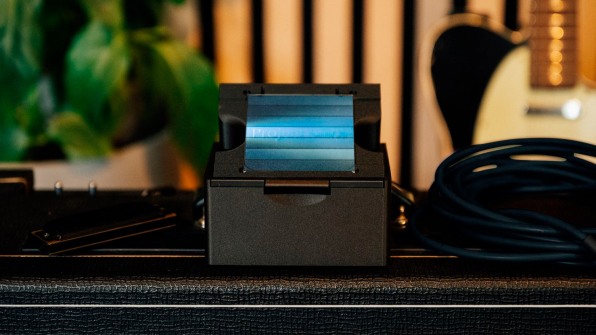
As Wolfe explains, the vault feels apropos given the uncertainty of our environmental and political future, but its very permanence also addresses the more practical concerns of musicians everywhere, who feel devalued in the internet age and fear their contributions may fade away.“I think the music industry really created a valueless appreciation of music,” Wolfe says. “Music has become so devalued in this age of streaming, even more so than it was in the age of iTunes, and the music industry has been so heavily focused on commodifying this art form, that to have a project like this reminds us of the long-term value of music for our species. To really preserve that is very much in alignment with what I believe.”




































